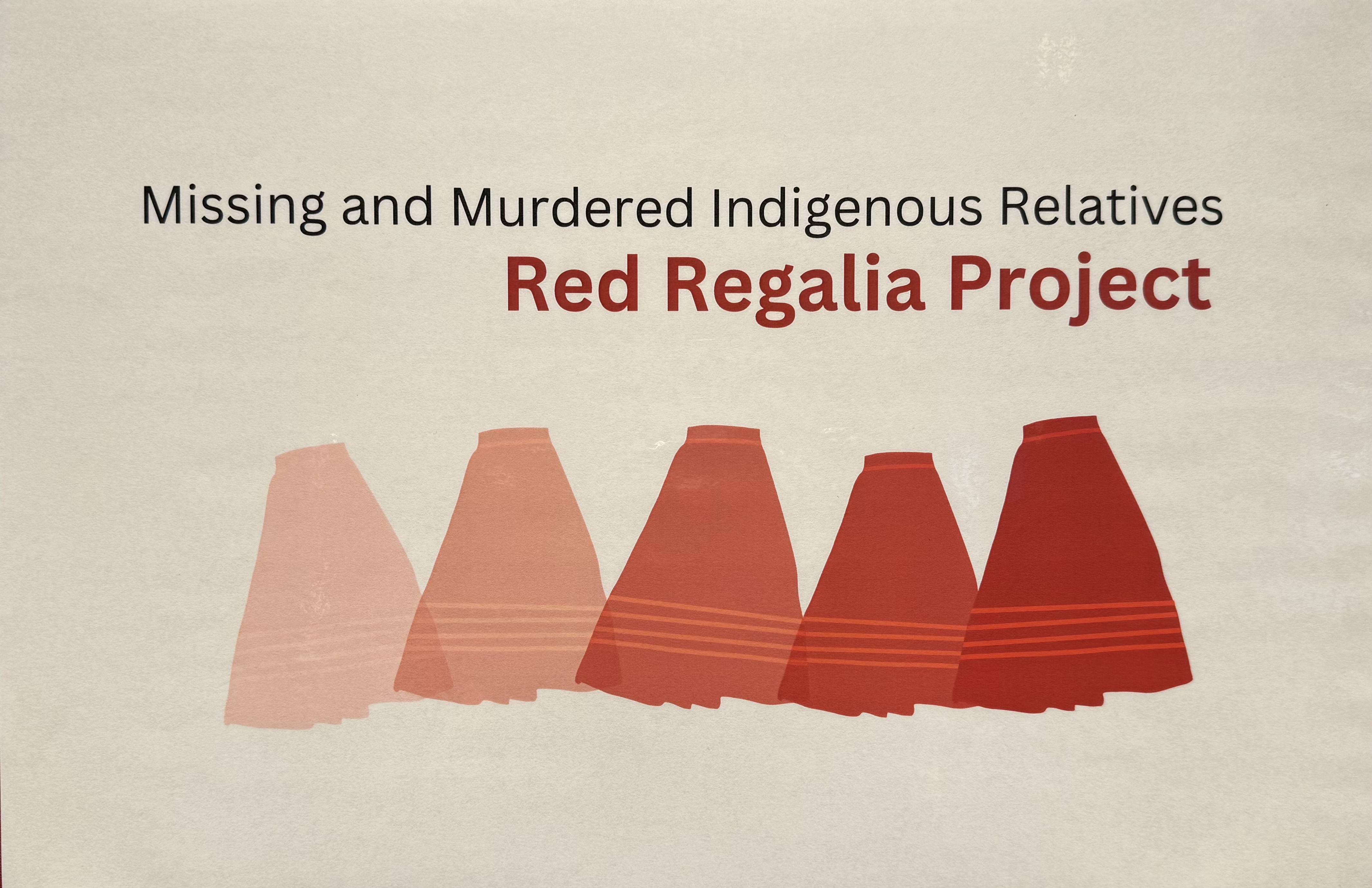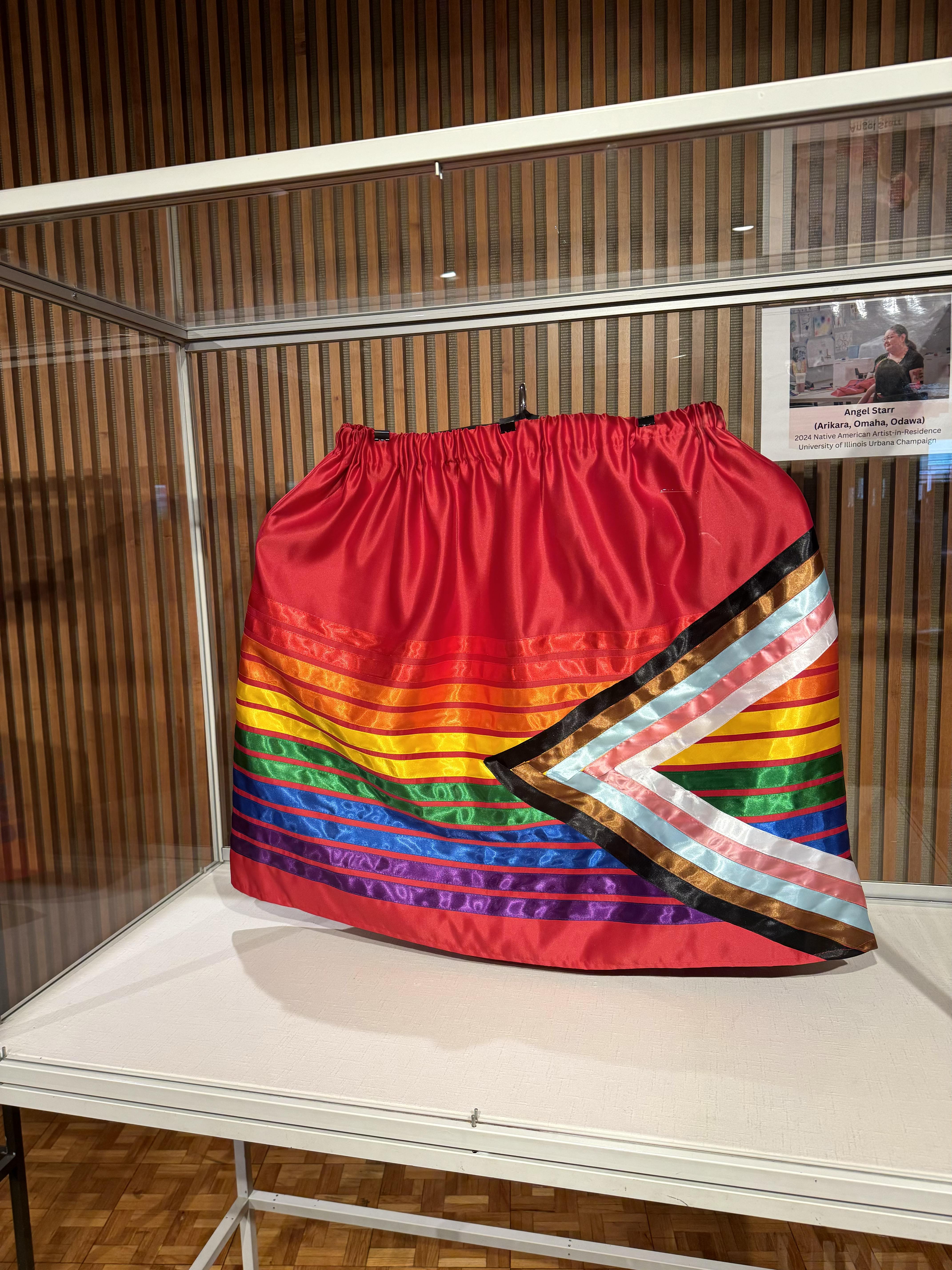Krannert Center Hosts Native American House Red Regalia Project

May 5 is a day of great remembrance, reverence, and importance within Indigenous communities. Starting in 2017 with efforts made by Senators Steve Daines and Jon Tester from Montana, this day has been designated MMIR Day in order to remember those Indigenous peoples whose lives were taken or victimized by kidnapping, murder, rape, assault, or other cruelties.
The MMIR crisis, which was initially referred to as the MMIW (Women) crisis, is a national crime pattern of disproportionate murder and missing cases in the US, which has been ongoing for centuries. The combination of the failure of the United States to protect indigenous peoples and the lack of resources presented to Tribes to provide justice and victim services has created such a crisis, which has only been exacerbated by the deterioration of protections and safeties towards indigenous communities over the past five centuries.
The Native American House at UIUC has combined forces with Chicago-based Native artist Angel Starr (Arikara, Omaha, and Odawa) to create the Red Regalia Project, which has been called "the spirit of creativity and awareness converged to spotlight the pressing crisis of violence against Indigenous Peoples." The focus of this project and Starr's residency at UIUC was the creation of traditional regalia in red, which is a "symbolic expression of creativity and remembrance".
Emily Laugesen, the Director of Community Engagement at Krannert Center, has been an integral part in combining forces between the Native American House and Krannert Center for this special day of recognition. "Krannert Center is so grateful to be able to partner with Native American House and additional campus partners to bring the MMIR Red Regalia Project to a wider audience. As the display explains, there is currently a crisis involving the disappearance and murder of Indigenous people without adequate response from our institutions of justice, and there are difficult and complicated structural reasons why this is occurring."
Each skirt created by the students Starr worked with is a representation of the personality and history behind each creator, in the context of their experiences both as an Indigenous person and in relation to the MMIW movement. One of the skirts featured dons beautifully colored ribbons that create the flag representing those that are LGBTQIA2S+ identifying, and who may have lost their lives as a result of their identification. Other skirts are adorned with beautiful, shimmering red ribbons or black dots. Each of the twenty-five skirts created during the three-day workshop time with not only beautifully tell the story of their creator, but bring such an impassioned light to MMIR and the issue behind neglecting the victims, their stories, and their endings.
Laugesen is hopeful that this collaboration will be understood in relation this institution's own history of wrongdoings towards Indigenous communities. "Part of the history of the University of Illinois, and many US institutions, is participating in practices that erase or minimize the pressing issues and realities facing Indigenous communities. So, in addition to helping raise awareness of Missing and Murdered Indigenous Relatives, we hope to support and amplify the voices of our Indigenous communities."
The Red Regalia Project exhibit will be on display in the Krannert Center lobby through the month of May. We hope you will come and view it as a reminder of this day, this crisis, and the changes that must be made.
 .
. 
